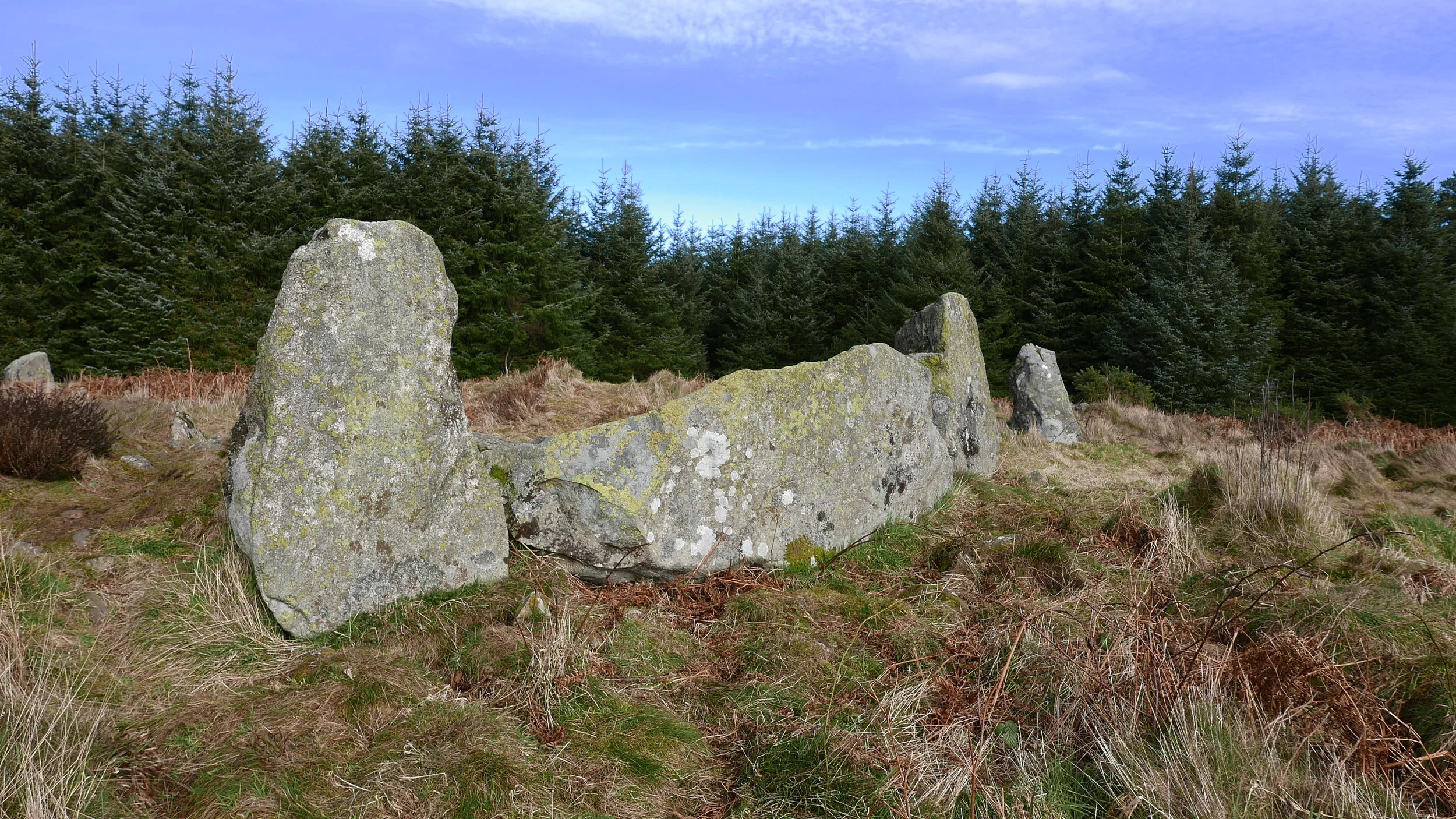A beautiful near complete circle with several uprights and a central kerbstone setting for a cairn.
Seen from the South, the circle can be easily described by its remaining uprights. The others are half buried but generally well preserved.
The recumbent is shapely and graceful but not monstrous or grand. The fallen flanker is of a broad, shaped style, suggesting that the setting that we now see is smaller than when built.
Horizon gazing never felt this good.
We are within the gaze of the twin peaks of Red and Green Hill, which enclose Auld Kirk O'Tough, the location I have speculatively suggested was a Grand Temple. The circle of Tomnagorn is discrete, not even commanding a position of symmetry or outstanding views. The position and view is still wholesome and dazzling to the sensitized consciousness, but I feel it is restrained.
The recumbent faces South East but why wasn't it built on the higher peak behind? There are countless megalith fragments scattered over the lower fields which suggests there may have been multiple monuments in this area.
Most of the stones of Tomnagorn have been worked into stunningly shaped pillars. Though not a large or imposing set of stones, the architects chose to focus on the finish and impression.
Every hilltop in the vicinity is beautiful, rounded, fulsome and inviting. The area has something of Middle Earth about it; timeless despite significant land use for foresting and arable, as well as grazing. This was a small family circle I believe, which somehow has resisted 5,000 years of mankind's vandalism and cruel exploitation of easy resources.
The light is pale blue. Kestrels cry while the tin machines of man purr self-confidently across the low lying road. The sun breaks through the cloud, offering a glimpse of the earthly heaven above the recumbent. Night is inert, foreboding and cold. Day is fresh and the light promises hope and action. They loved the sun for it brought life. They revered the moon for it shone on the darkness.










Extraordinary heavy metal circle near Aberdeen Dyce airport. One of the finest, most complete monuments of its kind. The growing urbanisation surrounding it cannot hold this druidic temple back.